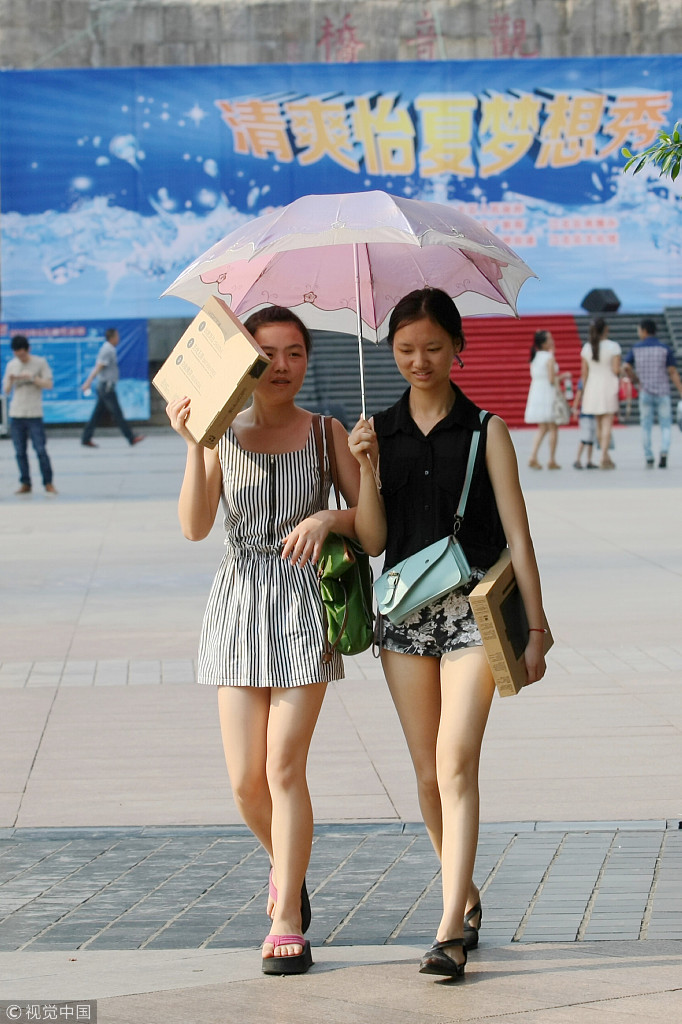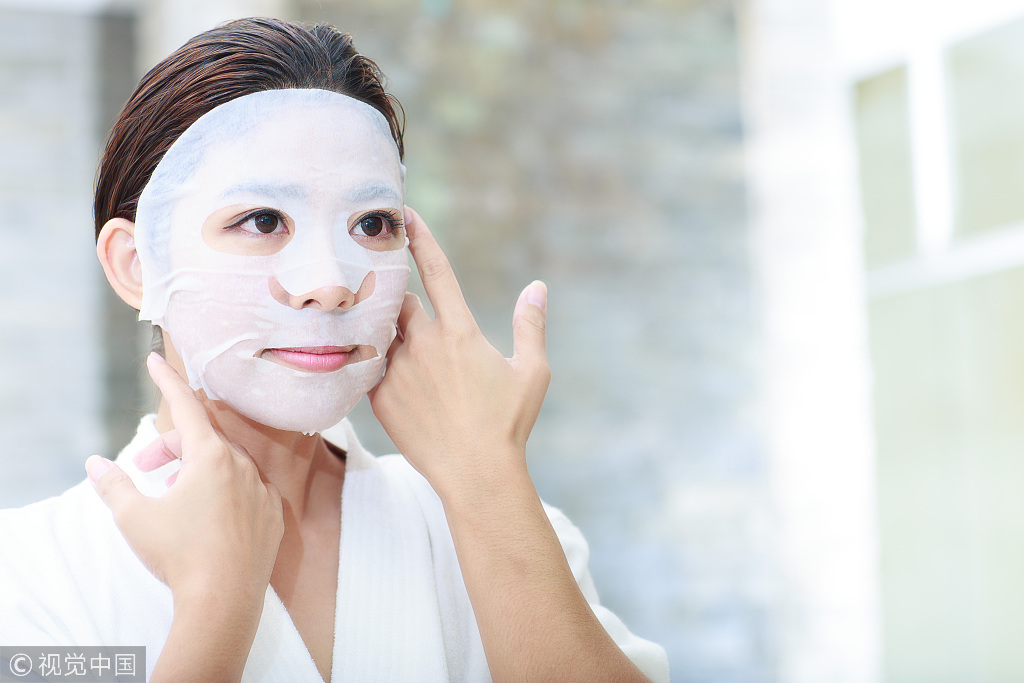China's fair-skinned obsession
- By Degen Hill
 0 Comment(s)
0 Comment(s) Print
Print E-mail China.org.cn, May 31, 2018
E-mail China.org.cn, May 31, 2018
Class origins
Today's China loves white skin. And no, it has nothing to do with race. The idea stems back to ancient China, around the Han Dynasty (206 BC-220 AD), when farmers and laborers would work outside all day and as a result, would have dark, tanned skin. Conversely, royalty, or those who came from wealth, would spend their days inside, not having to labor in the sun. As such, white skin represented social prestige and became highly desirable. Many Chinese today still believe that white skin represents "the elite" and have taken a number of measures to ensure their skin stays beautiful and white.

An Asian thing?
China is not the only country to cherish light skin. In Japan, Thailand, Cambodia, Vietnam and South Korea one can find the same preference, as darker skin similarly represents a life of poverty and labor spent bent over in the fields in the hot sun. The same aesthetic could be found throughout much of the Western world, as well, in centuries past, and for essentially the same reasons.
Skin color is, of course, determined by the amount of melanin found in the top layers of skin. So we are all born with varying levels of melanin, which not only leads to the full range of skin colors throughout the world, but also impacts how light or dark each individual's skin can become. So although sun does have an effect on the shade of a person's skin, it is also largely genetic.
Generalizing once again, it's women more than men in Asia who prefer whiter skin. Though some men are certainly concerned about skin color and one can see plenty of fair-skinned young men depicted in popular media, a look at ads for skin-whitening products reveals that women are still the primary targeted consumers.
The solution: 'there's a product for that'
So how do people go about changing their skin color? There is, perhaps not surprisingly, a huge market for products that do just that. With today's technology, a plethora of methods exist to whiten skin, including bleaching agents and melanin-inhibiting chemicals such as hydroquinone, Alpha Hydroxy Acids (AHAs), and mercury—all of which are often put into lotions, creams, facial masks and even deodorant. According to an article published by Global Industry Analysts in 2016, the global market for skin lighteners is projected to reach US$23 billion by 2020.

Facial masks are already an essential step in many women's daily beauty routine, delivering moisturizing, cleansing or exfoliating benefits. However, in many parts of Asia, facial masks now offer whitening effects as well. Advertisements often depict a woman's face divided in half, with her dark skin in the "Before" picture and visibly whiter skin in the "After."
And of course, there's no better way to keep skin light than to block out the sun. During the summer in China, women often hide under umbrellas, or avoid any exposure to skin-darkening sunlight with long sleeves, full-length gloves, scarves, wide-brimmed hats, knee-high socks and face masks.
Language and health controversies
The idea of being "tan" very often gets translated using the word "black," which has a negative connotation in Chinese but can also come across to foreigners as being racially charged. Chinese students often tease each other for having "black" skin, and as they grow up, girls fall into the belief that white skin is beautiful, which is often affirmed by their peers. One controversial commercial for a laundry detergent a few years ago caused a stir, depicting a woman putting a black man in the laundry, to have him come out a pale-skinned Asian man.
Furthermore, a number of whitening products have potent and toxic chemicals, leading to many instances of women damaging their skin by trying to whiten it too much or too often. Essentially, these products peel away the outer layers of the skin, which can not only be painful, but can also increase the risk of skin problems due to sun exposure. But even this does not deter many consumers; as the old adage claims, "Beauty is pain."
The white skin issue in Asia is similar to the super skinny body type portrayed in the U.S. It's what gets marketed to the public, and as such, it's what young people aspire to look like. The same happens in China, with many of China's icons having very white skin and little girls (and boys) growing up wanting to look just like them.
The white-skinned obsession, then, is purely psychological, fueled by marketing, celebrities, and outdated beliefs. And despite the health risks and cost of these treatments, China's desire for white skin doesn't show signs of fading anytime soon.






Go to Forum >>0 Comment(s)